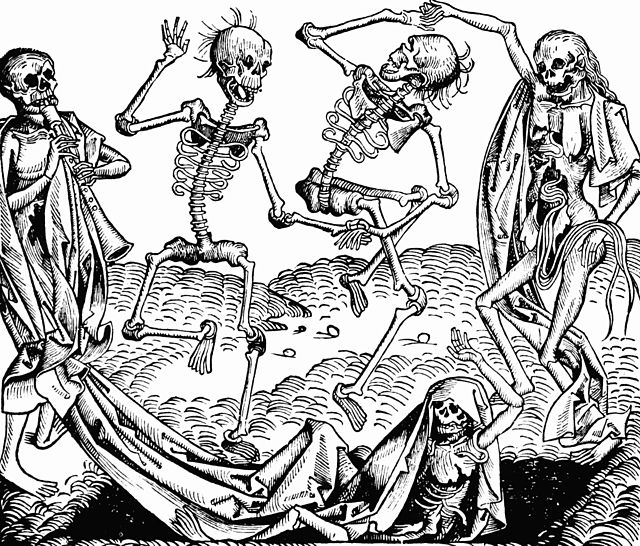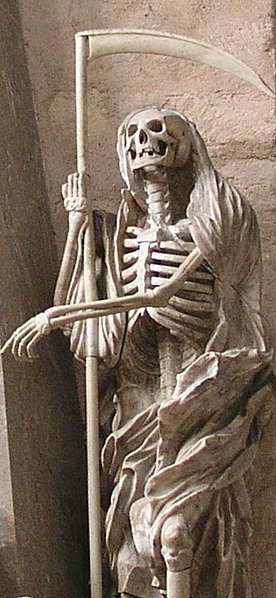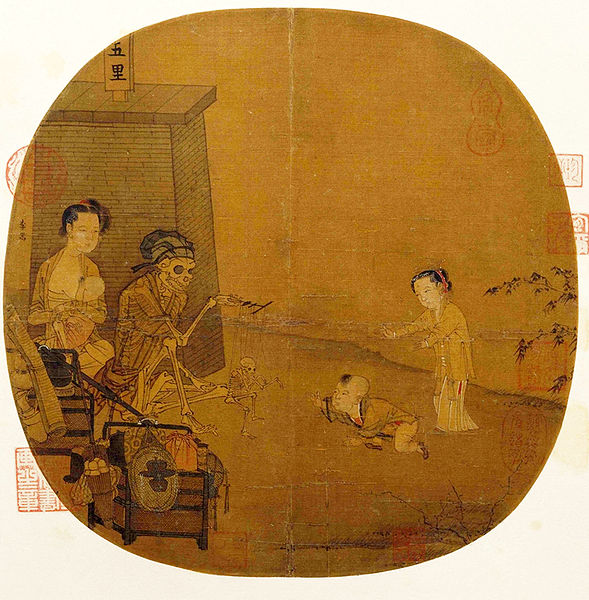The Danse Macabre, also called the Dance of Death, is an artistic genre of allegory from the Late Middle Ages on the universality of death.
Example of a woodcut from the book [The Abbott]
The Dance of Death (1493) by Michael Wolgemut, from the Nuremberg Chronicle of Hartmann Schedel
Charnel house at Holy Innocents' Cemetery, Paris, with mural of a Danse Macabre (1424–25)
Bernt Notke: Surmatants (Totentanz) from St. Nicholas' Church, Tallinn, end of 15th century (today in the Art Museum of Estonia)
Death is frequently imagined as a personified force. In some mythologies, a character known as the Grim Reaper causes the victim's death by coming to collect that person's soul. Other beliefs hold that the spectre of death is only a psychopomp, a benevolent figure who serves to gently sever the last ties between the soul and the body, and to guide the deceased to the afterlife, without having any control over when or how the victim dies. Death is most often personified in male form, although in certain cultures death is perceived as female. Death is also portrayed as one of the Four Horsemen of the Apocalypse. Most claims of its appearance occur in states of near-death.
Statue of Death, personified as a human skeleton dressed in a shroud and clutching a scythe, at the Cathedral of Trier in Trier, Germany
Mictlantecutli in the Codex Borgia
La Calavera Catrina, one of José Guadalupe Posada's Catrina engravings (1910–1913)
Skeleton Fantasy Show by Li Song (1190-1264)

![Example of a woodcut from the book [The Abbott]](https://upload.wikimedia.org/wikipedia/commons/thumb/c/c0/3._Holbein_death_Abbot.300dpi.jpg/369px-3._Holbein_death_Abbot.300dpi.jpg)






